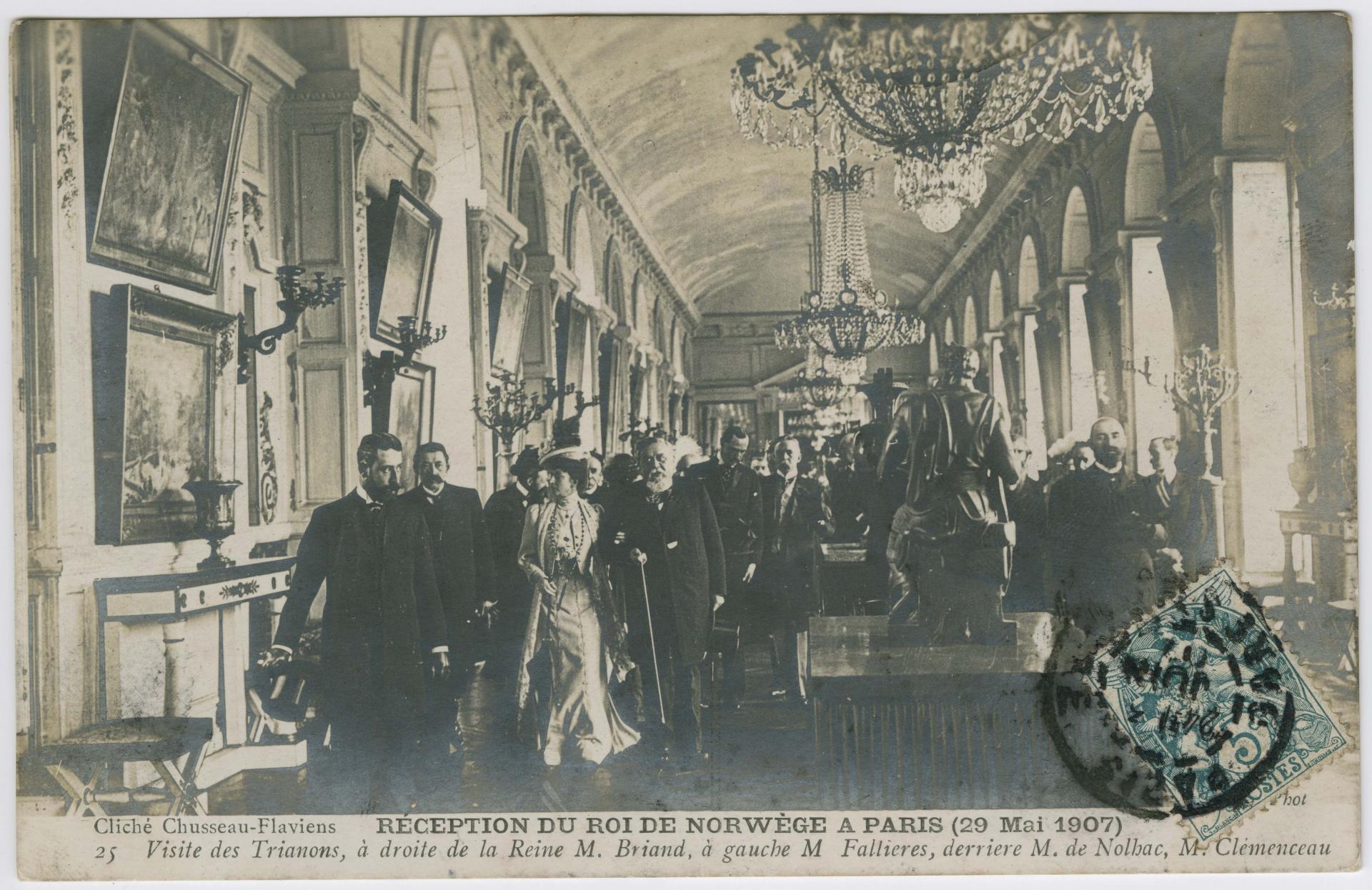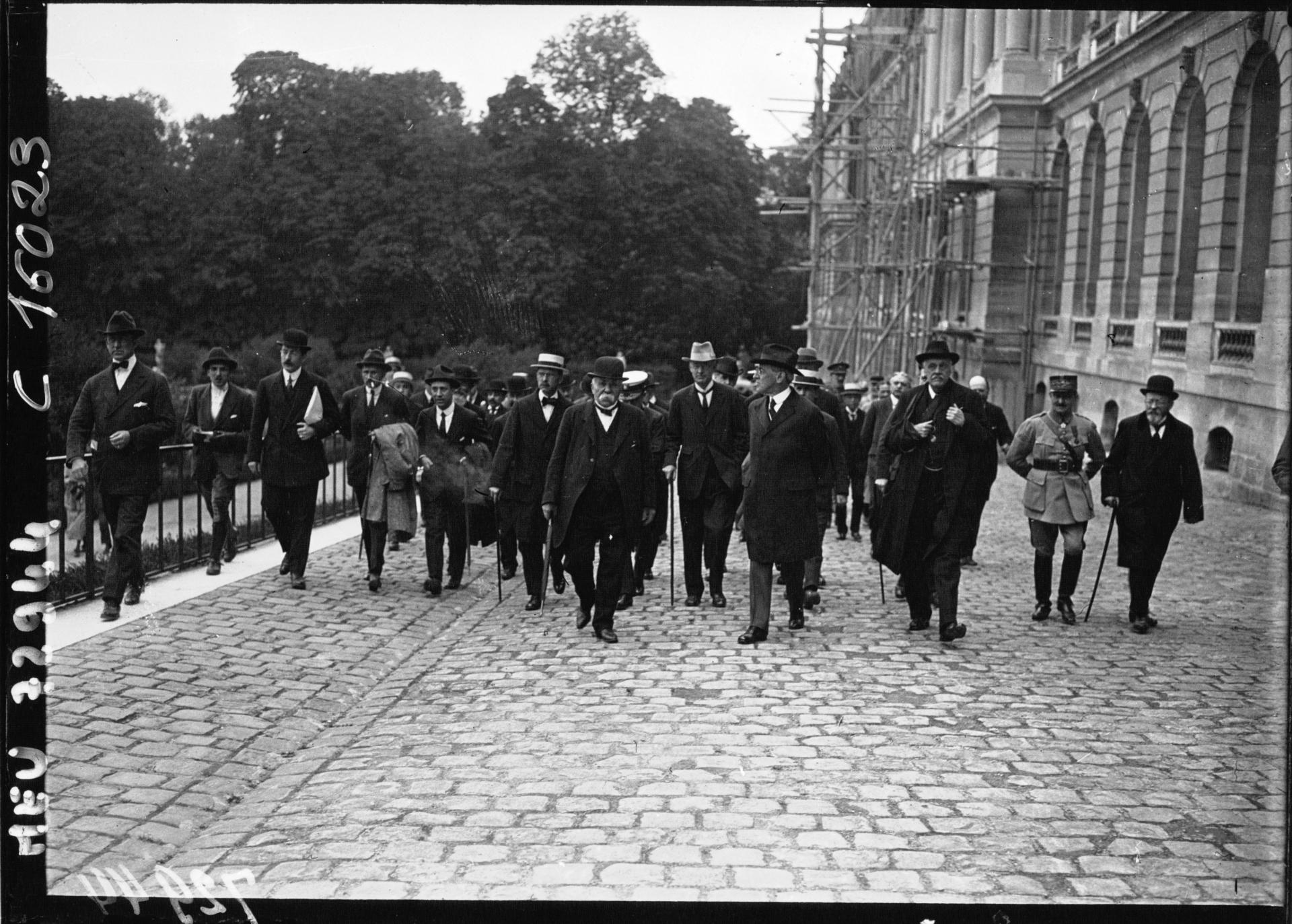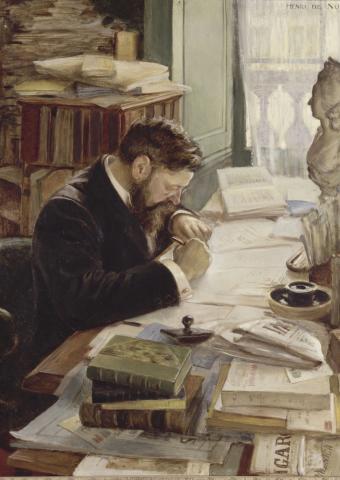Historic Background
The French Revolution marked the end of the monarchy and the departure of the royal family from the Palace of Versailles. The former residence of the kings of France became a museum dedicated "to all the glories of France" under the reign of Louis-Philippe, choosing to celebrate the victorious history of France through new historic galleries, including the impressive Gallery of Battles. The abdication of Louis-Philippe in 1848 marked a further turning point in the history of the Palace of Versailles, while the War of 1870 and defeat of France in 1871 marked a low point in its contemporary history.
It was in this very particular context that Pierre de Nolhac arrived at the Palace in 1878. Initially appointed as a curator at the Museum of Versailles under the orders of his boss Charles Gosselin, in 1892 he became curator of the Palace of Versailles. Although it was accessible in those days, the public had turned its back on the Palace for many years. Nolhac soon became aware of just how much effort was needed. Ever pragmatic, he came up with the idea of breaking away from Louis-Philippe’s vision of the Palace as a museum, and restoring the royal collections of the Palace, returning its interior to the appearance it had at the end of the Ancien Régime. Aware as he was that he could not undo the major work undertaken by Louis-Philippe (transformation of the Apartments of the Princes into the Gallery of Battles, creation of the Africa Rooms and Crimea Rooms, etc.), Nolhac preferred to keep what could still be saved. By his commitment, he managed to reconstitute the decor of the apartments in the central body of the Palace, while the wings remained in the state imagined by Louis-Philippe.
Nolhac’s Versailles
Arrival
On his arrival at Versailles, Pierre de Nolhac discovered a Palace that had been forgotten. As soon as he took up his duties, he undertook works to modernise and restore the decor of the apartments, removing the traces left by Louis-Philippe. He threw himself into extensive research into iconography, work that would be carried on by his successors, and progressed room by room, work by work, to gradually erase the history museum of Louis-Philippe and provide a clearer insight into the palace of the Ancien Régime.
Pierre de Nolhac was also behind the birth of the Société des Amis de Versailles in 1907, thanks to which the Palace of Versailles still continues to acquire a large number of historic works and items of furniture. The curator’s work was to enable the transformation of the history museum with a wealth of authentic collections, bringing Versailles back into fashion and opening the doors of the palace to a public that was curious to see the extensive collections now on display.
« I still see the elegant crowd jostling in the stairway to the Chimay Attic, the first room of which had just been dedicated to a temporary exhibition of our Nattier paintings. (...) From that moment on, the new museum was “launched” and we took the habit of offering new presentations each year to the keen and curious throng that was forming around us. The public responded with ever-growing haste to this undertaking whose meaning was unveiled little by little. »
– Pierre de Nolhac (The Resurrection of Versailles)

Reception of the King of Norway in Paris (29 May 1907) – Visit of the Trianons
© Château de Versailles, Dist.RMN / © Christophe Fouin
The Resurrection of Versailles
Throughout his career as curator at Versailles, Nolhac was called upon to organise visits for prominent political personalities from around the world, which also contributed to boosting the worldwide renown of the Palace. Visitors included Mathilde Bonaparte, Empress Eugénie, Ferdinand I of Bulgaria, Tsar Nicolas II and Haakon VII, King of Norway.
The First World War
During the First World War, Nolhac set about protecting the works at the palace, arranging for some of them to be taken far away from Versailles and the fighting. He looked on powerless, however, as the majority of the guards, fountain workers and gardeners left for the front. His duties as curator were gradually reduced, although he was still called upon to organise visits of the Palace for Allied visitors and military committees. He did play a key role, however, in the preparation of the Palace for the signature of the Treaty of Versailles on 28 June 1919. With the help of the Chief Architect of the Palace, Benjamin Chaussemiche, he coordinated the refurbishing of the rooms that would be hosting the Allied and German signatories. Nolhac received orders from the Ministry for Public Instruction and the Fine Arts to close the Palace during the works, but he was keen not to deprive visitors and got the Minister to agree to just a partial closure. Aware as he was of attending a major event in the history of the 20th century, he also accepted a request made by Henri Simon, Mayor of Versailles, to leave the installations set up for the signature in place for a few days, so that the public could see them.

In the grounds at Versailles: Clemenceau, Wilson, Sonnino and Balfour (Pierre de Nolhac on the right), Treaty of Versailles (1919)
© BnF Gallica
Nolhac’s Legacy
"I was longer bound by any duty: the future of our museum was assured. I had completed the bulk of the undertaking begun in my young days and could leave the task of completing the plans we shared to my staff, who would not be found lacking in their task (...). Versailles had taken back its place in the general culture of our country and we could be sure that it would not lose it again."
– Pierre de Nolhac (The Resurrection of Versailles)
Pierre de Nolhac left his job in 1920, after twenty-seven years spent at the service of the Palace of Versailles. His work over the years in the former royal residence restored the Palace of Versailles to its nobility of times gone by. From a site threatened with ruin since the end of the July Monarchy and the abdication of Louis-Philippe in 1848, the Palace and Museum had been transformed, at his instigation, into an authentic historic monument with its works and its first historic furnishings tracked down and installed once again in their original locations. Pierre de Nolhac succeeded in revitalising Versailles and attracting the curiosity of French and international visitors. He left the Palace knowing that his job was done.
Ever since, the name of Pierre de Nolhac has been intimately linked with the renaissance of royal Versailles at the beginning of the Third Republic.
"When spring enchants the skies of Paris for others, it is to Versailles that I go to seek it in my daydreams."
– Pierre de Nolhac (The Resurrection of Versailles)




